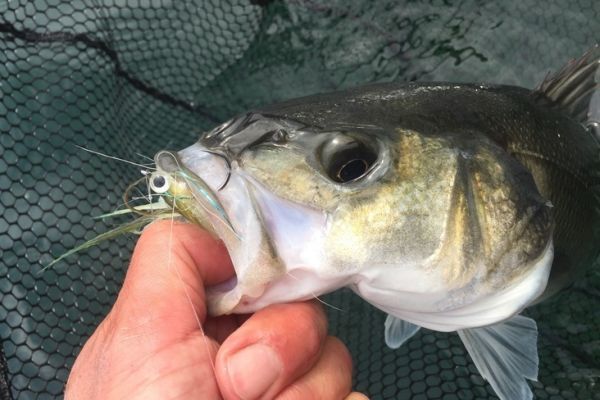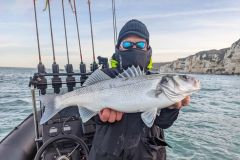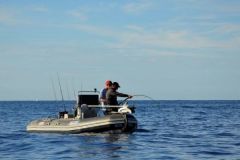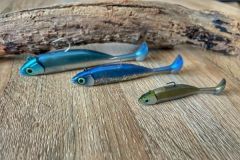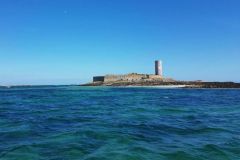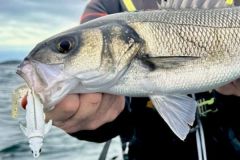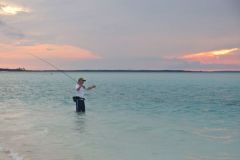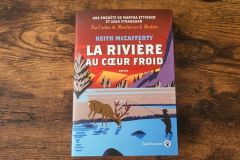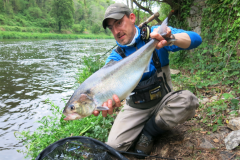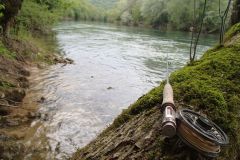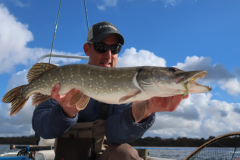1-Sight fishing for sea bass
For sight-fishing for sea bass, I mainly use imitation green crabs . I have various models but this is the one I prefer and with which I have caught the most bass and large specimens up to over 80 cm!
The idea is to place your crab in the path of a marauding sea bass, throwing it neither too close nor too far, and then watch the bass come to inspect and/or suck it in! 100% visual fishing.
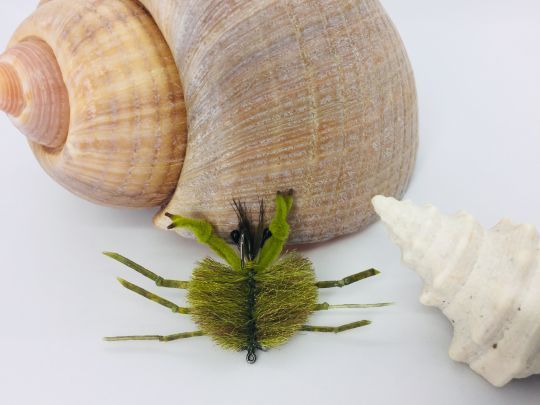
Imitation shrimp are also not to be overlooked, as sea bass regularly feed on them.
You can use this fly on sight, in small sizes or even with a slightly lighter model with less UV resin for fine fishing in little water. In this case, cast close to a sea bass coming to shore to hunt in the shrimps. The animation consists of short rapid strips alternating with pauses. Watch out for the touch!
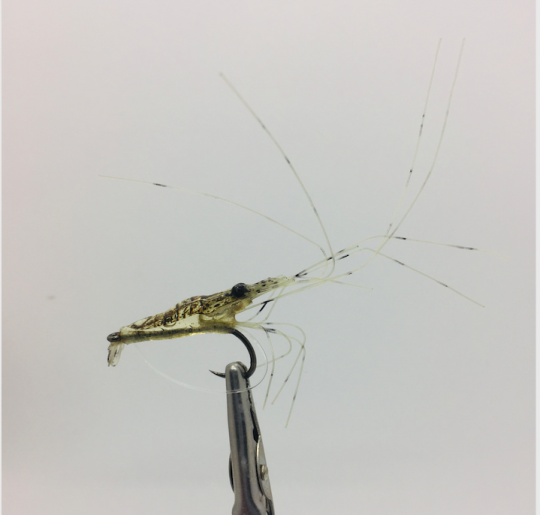
2-Prospecting for sea bass
For prospecting fishing in estuaries, I'm increasingly using imitation shrimp, which they feed on abundantly. They range from gray to pale pink.
In this case, you need to fish the edges, currents and rocks. You use it in the same way, but by guessing their presence or looking for the type of spot where they are likely to come to hunt.
Depending on the water level and current, I use a floating line, a floating line with an intermediate tip or a floating line with an intermediate tip. A 7 to 8 line rod is suitable in most cases, but in the sea it's often windy and a 9 line rod will provide considerable casting and fishing comfort. Then it all depends on the size of the fish you're after.
Fish imitations also work, but with less success, at least for me, in estuaries.
On the coast, whether from the shore or by boat, I tend to use streamers made (by me) from different materials. They are imitations of all kinds of forage fish.
I mainly use a Rio Striper intermediate line, and sometimes the 300 or 350 grain sinker when there's more current or when the bass are reluctant to come up and hunt.
The essential clouser-minnow
A fly that catches a wide variety of fish in both cold and tropical seas.
For the bar, I use the following colors: all-white (with a little pearl gloss), white/chartreuse, white/olive, white/yellow have given me the best results. But don't hesitate to try other models.
They give you a jerkier swimming action and provoke bass. Be careful with your rod, however, as they are weighted with diabolo lead eyes. In the event of collision with your rod, this could really damage it.
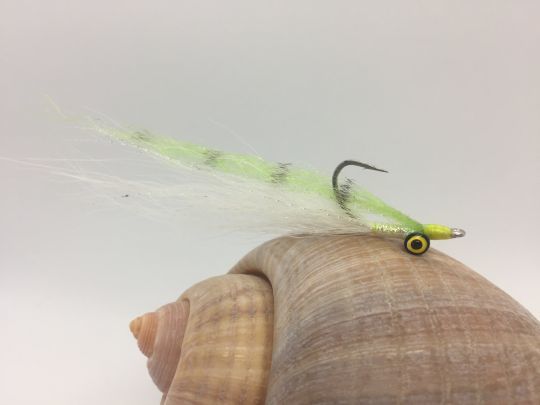
Flies made of EP-type synthetic fibers (Enrico Puglisi)
This fly is very easy to cast because it is so light. On the first cast, the water drains away, making it easier for beginners in particular to cast at the right distance. There's a wide choice of colors on the market. I rig them in white, white with olive back, white with green and green/blue back, white with grey back, white with bluish back mainly and on Gamakatsu SC 15 hooks from 1 to 2/0. For the size, adapt to the prey of the moment. Generally between 8 and 15 cm, or even more.
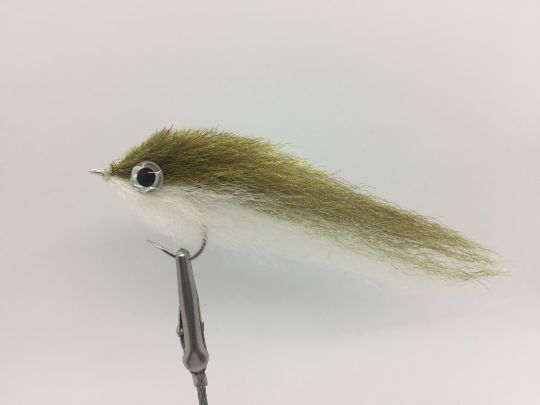
Hair and feather flies
I've been using nayat a lot for several years because it's light, highly mobile, lively and strong. It is available in a wide range of colors.
It will undulate more in the current than a synthetic fiber fly. I particularly like it in slower currents or in estuaries.
Available in the same colors as above and in several sizes (hook Arhex SA280).
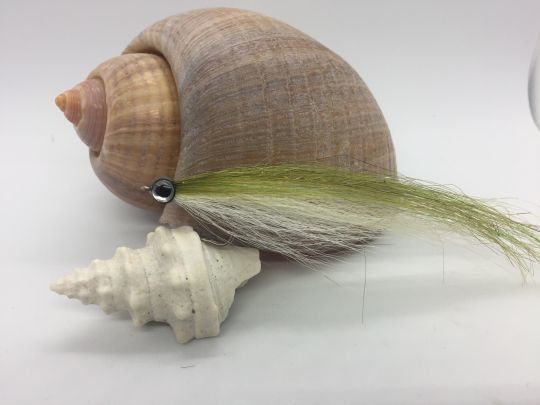
3-Surface bass fishing
For surface fishing (with floating silk), my favorite fly is a gurgler, which is a "slider" that glides on the surface and emits small vibrations and sprays of water.
He's unrivalled when it comes to raising sea bass, whether on oyster beds, hunting grounds or prospecting on rocky points or regular spots.
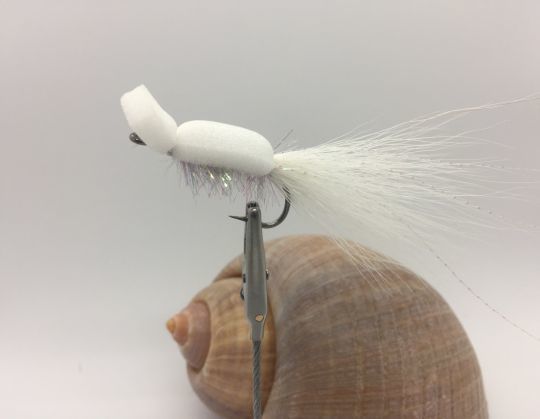
You can also use poppers, which are noisier and which I personally use less often. Maybe I'm wrong, who knows.
For me, they're best used in heavy seas, in the current to bring fish up from the bottom. In smaller sizes, however, they can be used in calmer conditions like the gurgler.
